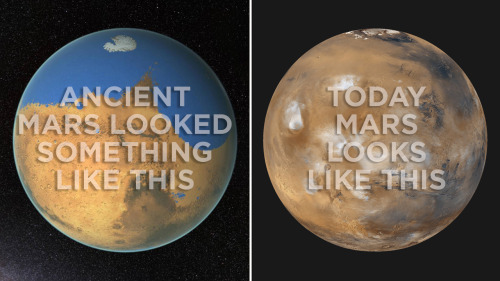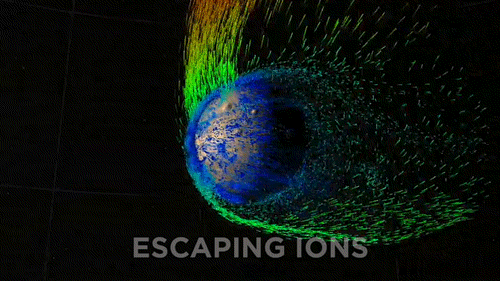Dotmpotter - Dot Potter


More Posts from Dotmpotter and Others

Artificial optical materials could allow cheaper, flatter, more efficient detectors for night vision and other uses
A new way of taking images in the mid-infrared part of the spectrum, developed by researchers at MIT and elsewhere, could enable a wide variety of applications, including thermal imaging, biomedical sensing, and free-space communication.
The mid-infrared (mid-IR) band of electromagnetic radiation is a particularly useful part of the spectrum; it can provide imaging in the dark, trace heat signatures, and provide sensitive detection of many biomolecular and chemical signals. But optical systems for this band of frequencies have been hard to make, and devices using them are highly specialized and expensive. Now, the researchers say they have found a highly efficient and mass-manufacturable approach to controlling and detecting these waves.
The findings are reported in the journal Nature Communications, in a paper by MIT researchers Tian Gu and Juejun Hu, University of Massachusetts at Lowell researcher Hualiang Zhang, and 13 others at MIT, the University of Electronic Science and Technology of China, and the East China Normal University.
The new approach uses a flat, artificial material composed of nanostructured optical elements, instead of the usual thick, curved-glass lenses used in conventional optics. These elements provide on-demand electromagnetic responses and are made using techniques similar to those used for computer chips. “This kind of metasurface can be made using standard microfabrication techniques,” Gu says. “The manufacturing is scalable.”
Read more.
When Firms Become Persons and Persons Become Firms: outstanding lecture

UC Berkeley Political Scientist Wendy Brown came to the London School of Economics last week to discuss her book Undoing the Demos, and her lecture (MP3) is literally the best discussion of how and why human rights are being taken away from humans and given to corporations.
Brown looks at the human rights enumerated in the US Bill of Rights, and how they have been interpreted in successive Supreme Court rulings like Hobby Lobby (corporations are people whose religious freedom entitles them to deny contraception to their workers) and Citizens United (corporations are people and have the free speech right to buy politicians). She suggests that these have been misread as merely conservative/business-oriented thinking gaining influence, and that rather, they are best understood as an ongoing project that grants personhood to companies at the expense of real people.
Brown speaks for more than an hour with almost no poli-sci/econ jargon, building elegant, beautiful arguments that should be accessible to anyone. If you listen to anything this weekend, make it this.
Neoliberal rationality — ubiquitous today in statecraft and the workplace, in jurisprudence, education, and culture — remakes everything and everyone in the image of homo oeconomicus. What happens when this rationality transposes the constituent elements of democracy into an economic register? In vivid detail, Wendy Brown explains how democracy itself is imperiled. The demos disintegrates into bits of human capital; concerns with justice cede to the mandates of growth rates, credit ratings, and investment climates; liberty submits to the imperative of human capital appreciation; equality dissolves into market competition; and popular sovereignty grows incoherent. Liberal democratic practices may not survive these transformations. Radical democratic dreams may not either.
In an original and compelling theoretical argument, Brown explains how and why neoliberal reason undoes the political form and political imaginary it falsely promises to secure and reinvigorate. Through meticulous analyses of neoliberalized law, political practices, governance, and education, she charts the new common sense. Undoing the Demos makes clear that, far from being the lodestar of the twenty-first century, a future for democracy depends upon it becoming an object of struggle and rethinking.
Undoing the Demos: Neoliberalism’s Stealth Revolution [Wendy Brown/Zone Books]
When Firms Become Persons and Persons Become Firms: neoliberal jurisprudence in Burwell v. Hobby Lobby Stores [LSE]
MP3

Energy conversion: Speeding up material discovery
Algorithm take months, not years, to find material for improved energy conversion
In even the most fuel-efficient cars, about 60 percent of the total energy of gasoline is lost through heat in the exhaust pipe and radiator. To combat this, researchers are developing new thermoelectic materials that can convert heat into electricity. These semiconducting materials could recirculate electricity back into the vehicle and improve fuel efficiency by up to 5 percent.
The challenge is, current thermoelectric materials for waste heat recovery are very expensive and time consuming to develop. One of the state of the art materials, made from a combination of hafnium and zirconium (elements most commonly used in nuclear reactors), took 15 years from its initial discovery to optimized performance.
Now, researchers from the Harvard John A. Paulson School of Engineering and Applied Sciences (SEAS) have developed an algorithm that can discover and optimize these materials in a matter of months, relying on solving quantum mechanical equations, without any experimental input.
“These thermoelectric systems are very complicated,” said Boris Kozinsky, a recently appointed Associate Professor of Computational Materials Science at SEAS and senior author of the paper. “Semiconducting materials need to have very specific properties to work in this system, including high electrical conductivity, high thermopower, and low thermal conductivity, so that all that heat gets converted into electricity. Our goal was to find a new material that satisfies all the important properties for thermoelectric conversion while at the same time being stable and cheap.”
Read more.

How To Make Solar Cells Without Toxic Materials

Researchers find non-toxic way to make thin film solar cells…
Follow me on Twitter and Google+.
Image: “A surfactant template guides the self-assembly of functional polymer structures in an aqueous solution” by Youngkyu Han and Renee Manning, via Oak Ridge National Laboratory.




Ancient Mars had a thick atmosphere filled with carbon dioxide that kept it warm. Rivers trickled into lakes across its surface. Some researchers think there might even have been an ocean. It looked a lot like ancient Earth.
But Mars doesn’t have Earth’s magnetic field, and that has made all the difference. Our magnetic field blocks solar wind - the high energy particles emitted by the sun.
Thanks to new data from the Mars Atmosphere and Volatile Evolution Mission (MAVEN) we know that this solar wind has been assaulting Mars for centuries, and as a result its atmosphere is constantly leaking into space.
Read more here!
Making an impact
ESA - Clean Space Programme logo. 25 September 2015 When a rocket is launched into space it crosses all layers of the atmosphere and interacts with them. How much impact does a launch have on the atmosphere and can we quantify the effect in such a way that we can take mitigation measures? These are only a few of the questions raised by the Clean Space AtILa (Atmospheric Impact of Launchers) project. Neil Murray explains: “It is difficult to use computer modelling to precisely monitor what happens when a rocket is launched as the size of the plume is far smaller than the scale of the climate models that we use to model the atmosphere”.
Picture perfect liftoff
Therefore two strategies were worked out to model the impact, one started from the size of the plume and this was allowed to develop over time and space to the size of the climate model and used as the boundary conditions of the climate model. Another strategy started from the size of the larger model and introduced sub-grid models which modelled the plume within the climate model grids. Both models gave surprisingly similar results. So far it has been thought that chlorine, which is converted from the oxidizer (ammonia perchlorate) in the solid booster fuel mixture, has had the main effect on ozone depletion in the immediate area where the plume is emitted.
Computations conducted at ONERA using the CEDRE code
The latest studies have shown that alumina particles, i.e., oxidised aluminium, which is also present in the solid rocket fuel, may also have a significant ozone depletion effect depending on the particle size. “If the particles are on the micrometer scale they would quickly fall out of the sky and have little impact on the atmosphere. However, the smaller the particles, the higher their combined surface area and the longer they remain suspended in the air, which means that their potential catalytic effect in ozone reduction could also be much higher.” Therefore it is imperative that quantitative data is collected to be able to accurately measure and predict the impact by mathematical models.
Computations conducted at ONERA using the CEDRE code
The first step towards quantitative data is the kick-off of an activity organised in cooperation with DLR whereby a solid rocket motor model in a wind tunnel will be used to simulate the evolution of particles in a representative rocket chamber and to then interpolate this to the conditions at launch. From these measurements accurate models will be developed for predicting the development of alumina particles under real launch conditions. So why not just use real launch data? “It is not that easy to make these measurements during a real launch and so far no data has been collected for European launchers. Up to now we have mainly been relying on data measured by NASA during launches in the 1990s, however, the representativeness of this data with respect to European launchers is questionable. This ultimately leaves us with the task of somehow collecting such flight data and it is something that we are discussing at length.“
Ariane 5 ECA V184 climbout
"Even when we are able to make real-time measurements during a launch it still is a large task to interpret this data correctly and extrapolate this to all launches, as daily changes in the atmosphere and the time of the launch are just a few parameters that severely influence the effect. Luckily we are working with some of Europe’s experts in climatology!” The AtILa project aims to understand the impact of launching its rockets into space by modelling the rocket plumes from their origin in the rocket chamber up to their impact on a global scale using climate models. This is one of the projects that ESA carries out under the Clean Space initiative which has carried out life cycle assessments for the space industry in order to monitor the effect of each space project on the environment. Implementing eco-design strategies into every phase of a space project is the ultimate aim of this initiative. ESA links: Life cycle assessment training at ESA: http://www.esa.int/Our_Activities/Space_Engineering_Technology/Clean_Space/Life_Cycle_Assessment_training_at_ESA Virtual rocket launches will probe atmospheric effects: http://www.esa.int/Our_Activities/Space_Engineering_Technology/Clean_Space/Virtual_rocket_launches_will_probe_atmospheric_effects Considering hydrazine-free satellite propulsion: http://www.esa.int/Our_Activities/Space_Engineering_Technology/Clean_Space/Considering_hydrazine-free_satellite_propulsion ‘Green’ satellite fuel designed to make space safer: http://www.esa.int/Our_Activities/Space_Engineering_Technology/Green_satellite_fuel_designed_to_make_space_safer About Clean Space: What is Clean Space?: http://www.esa.int/Our_Activities/Space_Engineering_Technology/Clean_Space/What_is_Clean_Space Why is it needed?: http://www.esa.int/Our_Activities/Space_Engineering_Technology/Clean_Space/Why_is_it_needed What are its objectives?: http://www.esa.int/Our_Activities/Space_Engineering_Technology/Clean_Space/What_are_its_objectives Images, Text, Credits: ESA/CNES/ARIANESPACE/Photo Optique Vidéo CSG/Service POV du CSG. Best regards, Orbiter.ch Full article
You're only an "economic migrant" if you're poor and brown

Ned Richardson-Little is a Canadian academic who went to the US “in search of a better life,” did research in Germany and settled in the UK, something he was able to do thanks to his economic migrant grandfather who happened to have been born in Scotland.
Richardson contemplates the vilified category of “economic migrant” – “the greedy, dark other to those virtuously fleeing conflict” – and wonders how it is that no one has ever vilified him, given that he, too, is so obviously an “economic migrant.”
My grandparents (and father) were displaced people – Red Army deserters who destroyed their papers so that they could escape Europe via the DP boats to Canada – and I left Canada for the USA to found a company, then moved to the UK to represent an NGO and became a citizen, and have now moved back to the USA to write novels and campaign for better information policy. No one has ever called me an economic migrant.
https://boingboing.net/2015/11/29/youre-only-an-economic-mig.html
Wyoming's Ag-Gag law makes it a crime to gather evidence of crime

With this year’s “ag-gag” law, Wyoming has made it a crime to gather evidence of agricultural wrongdoing, from illegal pollution to animal cruelty, even from public land – and also prohibits regulators from acting on information gathered in violation of the law.
Many public interest groups are challenging the law. A similar – but less Draconian – law in Idaho was struck down this year as unconstitutional.
Read the rest
-
 amimiamimiamimi reblogged this · 1 month ago
amimiamimiamimi reblogged this · 1 month ago -
 annahmiraculousmillenium liked this · 1 month ago
annahmiraculousmillenium liked this · 1 month ago -
 psychodon525 reblogged this · 1 month ago
psychodon525 reblogged this · 1 month ago -
 goddess0laura liked this · 1 month ago
goddess0laura liked this · 1 month ago -
 gamergal-ds reblogged this · 1 month ago
gamergal-ds reblogged this · 1 month ago -
 gamergal-ds liked this · 1 month ago
gamergal-ds liked this · 1 month ago -
 averygaycat reblogged this · 1 month ago
averygaycat reblogged this · 1 month ago -
 averygaycat liked this · 1 month ago
averygaycat liked this · 1 month ago -
 chargeaznable liked this · 1 month ago
chargeaznable liked this · 1 month ago -
 skystrikerpilot reblogged this · 1 month ago
skystrikerpilot reblogged this · 1 month ago -
 skystrikerpilot liked this · 1 month ago
skystrikerpilot liked this · 1 month ago -
 cosvoyage liked this · 1 month ago
cosvoyage liked this · 1 month ago -
 tolands-husband liked this · 1 month ago
tolands-husband liked this · 1 month ago -
 triplspacee liked this · 1 month ago
triplspacee liked this · 1 month ago -
 labia-majorasmask liked this · 1 month ago
labia-majorasmask liked this · 1 month ago -
 romosos-journal reblogged this · 1 month ago
romosos-journal reblogged this · 1 month ago -
 nutzworth liked this · 1 month ago
nutzworth liked this · 1 month ago -
 izaistired liked this · 1 month ago
izaistired liked this · 1 month ago -
 xxlb74xx liked this · 1 month ago
xxlb74xx liked this · 1 month ago -
 chugg12 liked this · 1 month ago
chugg12 liked this · 1 month ago -
 shark-toothed-fae liked this · 1 month ago
shark-toothed-fae liked this · 1 month ago -
 local-moth liked this · 1 month ago
local-moth liked this · 1 month ago -
 cybermoth672 liked this · 1 month ago
cybermoth672 liked this · 1 month ago -
 bun-from-the-empty-window liked this · 1 month ago
bun-from-the-empty-window liked this · 1 month ago -
 darkangel11122 liked this · 1 month ago
darkangel11122 liked this · 1 month ago -
 catforcattitfortat reblogged this · 1 month ago
catforcattitfortat reblogged this · 1 month ago -
 catforcattitfortat liked this · 1 month ago
catforcattitfortat liked this · 1 month ago -
 artyc-stan-of-tsp reblogged this · 1 month ago
artyc-stan-of-tsp reblogged this · 1 month ago -
 artyc-stan-of-tsp liked this · 1 month ago
artyc-stan-of-tsp liked this · 1 month ago -
 nekcihcetaruccayllacilbib liked this · 1 month ago
nekcihcetaruccayllacilbib liked this · 1 month ago -
 eh-eh-ron liked this · 1 month ago
eh-eh-ron liked this · 1 month ago -
 mcr-pr-fob liked this · 1 month ago
mcr-pr-fob liked this · 1 month ago -
 perc-sephone liked this · 1 month ago
perc-sephone liked this · 1 month ago -
 queerdo27 liked this · 1 month ago
queerdo27 liked this · 1 month ago -
 blacksn00ty reblogged this · 1 month ago
blacksn00ty reblogged this · 1 month ago -
 blacksn00ty liked this · 1 month ago
blacksn00ty liked this · 1 month ago -
 neebnabs liked this · 1 month ago
neebnabs liked this · 1 month ago -
 mirast-odaest liked this · 1 month ago
mirast-odaest liked this · 1 month ago -
 natlikescornflakes liked this · 1 month ago
natlikescornflakes liked this · 1 month ago -
 musings-of-morgan liked this · 1 month ago
musings-of-morgan liked this · 1 month ago -
 mastermoofin liked this · 1 month ago
mastermoofin liked this · 1 month ago -
 dabigstinky liked this · 1 month ago
dabigstinky liked this · 1 month ago -
 angelicrypt liked this · 1 month ago
angelicrypt liked this · 1 month ago -
 spiced-honey reblogged this · 1 month ago
spiced-honey reblogged this · 1 month ago -
 foolscliff reblogged this · 1 month ago
foolscliff reblogged this · 1 month ago -
 foolscliff liked this · 1 month ago
foolscliff liked this · 1 month ago -
 cancan-jpg liked this · 1 month ago
cancan-jpg liked this · 1 month ago -
 purplehuman48 liked this · 1 month ago
purplehuman48 liked this · 1 month ago -
 theclimbingnerd liked this · 1 month ago
theclimbingnerd liked this · 1 month ago -
 ratgirlcock reblogged this · 1 month ago
ratgirlcock reblogged this · 1 month ago